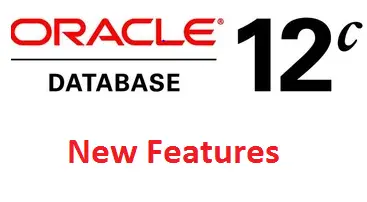Oracle is doing every thing to jump into the cloud bandwagon. With 12C, Oracle is trying to address the problem of Multitenancy through this feature. There is a radical change and a major change in the core database architecture through the introduction of Container Databases also called CBD and Pluggable Databases (PDB). The memory and process is owned by the Container Database. The container holds the metadata where the PDBs hold the user data. You can create upto 253 PDBs including the seed PDB
Related Articles
Oracle database 12c: Container Database (CDB) and Pluggable Database (PDB)
Oracle database 12c:How to create Pluggable database in 12c database
Redaction Policy
This is one of the top features in Oracle 12C. Data Redaction in simple terms means, masking of data. You can setup a Data Redaction policy, for example salary field in a Employee table can be masked. This is called redaction.
When you do a select * from employee, it will show that the Salary is masked.
The new data masking will use a package called DBMS_REDACT. It is the extension to the FGAC and VPD present in earlier versions.
Online rename and relocation of an active data file
A data file migration or renaming in Oracle database 12c R1 no longer requires a number of steps i.e. putting the tablespace in READ ONLY mode, followed by data file offline action. In 12c R1, a data file can be renamed or moved online simply using the ALTER DATABASE MOVE DATAFILE SQL statement. While the data file is being transferred, the end user can perform queries, DML and DDL tasks. Additionally, data files can be migrated between storages e.g. from non-ASM to ASM and vice versa.
Related article
Online move of active datafile in 12c
Table or partition recovery in RMAN
Oracle database backups are mainly categorized into two types: logical and physical. Each backup type has its own pros and cons. In previous editions, it was not feasible to restore a table or partition using existing physical backups. In order to restore a particular object, you must have logical backup. With 12c R1, you can recover a particular table or partition to a point-in-time or SCN from RMAN backups in the event of a table drop or truncate.
Multiple indexes on the same column
Pre Oracle 12c, you can’t create multiple indexes either on the same column or set of columns in any form. For example, if you have an index on column {a} or columns {a,b}, you can’t create another index on the same column or set of columns in the same order. In 12c, you can have multiple indexes on the same column or set of columns as long as the index type is different. However, only one type of index is usable/visible at a given time. In order to test the invisible indexes, you need to set the optimizer_use_use_invisible_indexes=true.
Top N Query and Fetch and offset Replacement to Rownum
With the release of Oracle Database 12c, Oracle has introduced this new SQL syntax to simplify fetching the first few rows. The new sql syntax “Fetch First X Rows only” can be used.
Related article
Top-N Queries and Pagination
Online migration of table partition or sub-partition
Migration of a table partition or sub-partition to a different tablespace no longer requires a complex procedure in Oracle 12c R1. In a similar way to how a heap (non-partition) table online migration was achieved in the previous releases, a table partition or sub-partition can be moved to a different tablespace online or offline. When an ONLINE clause is specified, all DML operations can be performed without any interruption on the partition|sub-partition which is involved in the procedure. In contrast, no DML operations are allowed if the partition|sub-partition is moved offline.
Database Archiving:
This feature enables archiving rows within a table by marking them as inactive. These inactive rows are in the database and can be optimized using compression but are not visible to the application. These records are skipped during FTS (Full Table Scan
DDL logging
There was no direction option available to log the DDL action in the previous releases. In 12cR1, you can now log the DDL action into xml and log files. This will be very useful to know when the drop or create command was executed and by who. The ENABLE_DDL_LOGGING initiation parameter must be configured in order to turn on this feature. The parameter can be set at the database or session levels. When this parameter is enabled, all DDL commands are logged in an xml and a log file under the $ORACLE_BASE/diag/rdbms/DBNAME/log|ddl location.
I hope you like the Oracle 12c New features details. We have also created a Oracle 12c New features pdf for downloading all the significant features in Oracle 12c with details. Link is provide below

